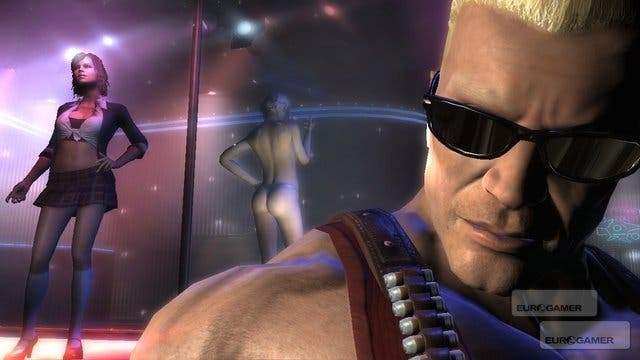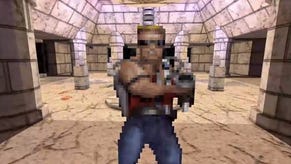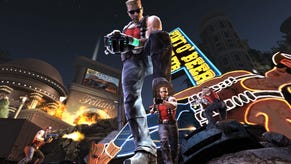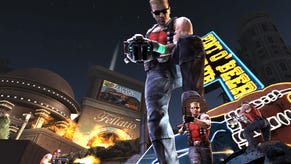Finishing Duke Nukem Forever
Randy Pitchford on the end of history.
Pitchford also notes that, despite his position as studio boss and obvious affection for the project, he didn't take the decision to acquire the Duke Nukem IP unilaterally.
"The entire studio was aware before the decision was made, because the culture at Gearbox is very transparent and so we communicated and discussed and examined that question together as a studio," he says.
Before that happened, though, Pitchford had to pitch for it. "I reached out to George [Broussard] and Scott [Miller – both co-founders of 3D Realms]. If the problem is, 'Duke is dead? Really?', then the goal is, 'Duke should live.'" The Mission, remember?
Due diligence was done as Randy, George and Scott talked it through at length, working out what needed doing and what could be – after over a decade the guiding principle was surely "realistically" – done.
This process only served to deepen Pitchford's faith and fervour. "It became more correct rather than less correct the more time we had to think about it," he says.
When the announcement came, many on the outside thought he was, well, a little bit bonkers. After all, we're talking about a game that, after 12 years in development, had cost tens of millions of dollars and produced little more than a few trailers and countless broken promises. Which suggests a project and a studio managed with the efficiency of Fawlty Towers.

Pitchford says he can sympathise with that notion, "Because it seems so absurd that anyone would spend this long making a game - there must be something really wrong." But he dismisses this analysis as ill-informed conjecture. "That's what we imagine. But we also have to accept that we're imagining that; we're making a lot of assumptions there."
This is a critical point to understand. Whenever Pitchford talks about the game he is careful to state that it is not his game, rather the creation of others he is realising.
"The attitude that I've had and the attitude of the studio - the thing I committed my studio to - was not to try to make it into something it isn't or something it shouldn't be or something that feels like ours rather than theirs," he says. "It needs to feel like it's the right one, the authentic, correct one."
A major reason this has been possible at all, he stresses, is continuity. "Did you watch the trailer from 2001?" he asks. "At the end of that trailer there's credits. If you go back and look at those credits, with the exception of one name, every single artist and designer listed in those credits had at some point over the past decade either landed at Gearbox or is now part of the project."
In preserving the myth of Forever, Pitchford knows these details matter. But it doesn't answer a fundamental question: the concept may have been in place, but what state was the actual game in when Gearbox took it over? Pitchford is less precise here.
"I've seen the things that were the beats that they were kind of thinking about in 2007 and how they reimagined that again in 2008 and how they manipulated it a bit in 2009," he says.
The implication of Pitchford's words is startling: that, after a decade of development, the game was in a form where one could only see what "they were kind of thinking about".








